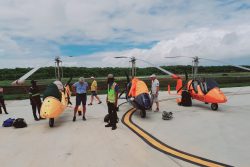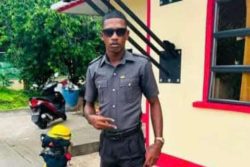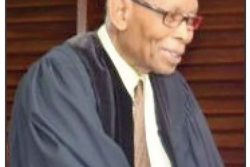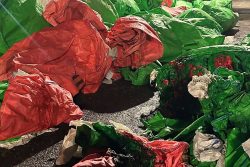Arts On Sunday this week presents a study on the art of photography in Guyana by Alim Hosein, Coordinator of the Guyana Visual Arts Competition and Exhibition, linguist, artist, literary and art critic, and English lecturer at the University of Guyana.
Painting is what comes to mind when most Guyanese think about art. Sculpture comes in at number two. Photography, however, is not usually seen as art. This might be because it is so familiar, seems so easy to do, and appears merely mechanical. The cell-phone age has also made taking photographs as easy as thinking about it, unlike the long hours and craftsmanship needed for painting, sculpture, ceramics and so on. Photographs or pictures are now ephemeral, throw-away things – because of the ease with which we can create them, we take thousands of them and equally discard or lose thousands of them.
Photographic technology is also now a popular part of the contemporary world, one in which there are new ways of dealing with information, making cameras an important life tool – a way of quickly capturing notes in a class or meeting, a few relevant pages of a book, a recipe, or the style of a dress from a magazine, and so on. More people are using the technology nowadays for capturing evidence, such as of a burglary or motor accident, or a record of a payment receipt. In a less functional way, millions of people now use photographic technology as a social tool to keep in contact with others, or even to create an identity among the billions of people in the world. These uses of photographic technology can be described as taking pictures – visual records – which usually have a functional purpose.
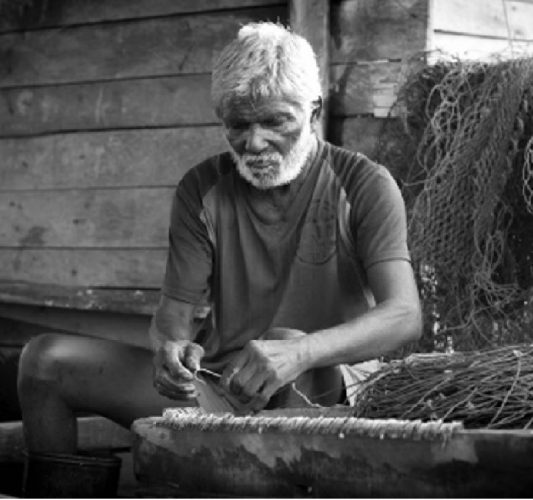
True, there are some cases when pictures might also have powerful effect. As a case in point, in 2014, a mug shot of an American criminal went viral after police posted it on Facebook. Pictures can also serve as valuable historical records. But there are times when even ordinary people feel moved about a scene they think is beautiful, or on realising the arrangement of the food on their plate looks particularly delicious, or by something that is happening around them, such as buildings being torn down and replaced by concrete and steel, a street protest, or some other mundane or significant moment or event. They are motivated to capture (and even share) that moment. They feel impelled by some inner need to respond to the external world. They thus consciously or unconsciously enter a relationship with the subject, and at the same time, they place themselves and the subject in a relationship with viewers as they communicate something to them. When they do this, they create a photograph, not just a picture or visual record, but a moment that is an intersection of human feeling and thought and the world. The photographer seeks out the best composition of light, colour, texture, form, angle, feeling and so creates an image that uniquely captures the intangible moment and communicates something dialectally personal about it.
Photography, therefore, has a rightful place among the arts, and it depends not just on the mechanical means or even control of technical details, although these are necessary. There are also of course serious, deliberate photographers, and photography itself has developed all kinds of techniques, branches, specialisations and philosophies. True, anyone can take a physically good picture nowadays, but the art of photography depends on having the passion, and the idea (or several ideas), of realising and capturing the right moment, and the knack for getting all the technical details right for that moment. For this, a soul, talent, and vision are needed, and these can only come from the photographer: from an artist.
History
Photography has a long history in Guyana, dating back to the mid-1800s. Between then and the early 1900s, there were many photography businesses in Guyana. There may have been Guyanese who, over the subsequent years, had the ability and the drive to pursue photography as an art, but sadly, they have not been recognised in our art history, which is highly-focused on painting and sculpture. This is so even though in more recent times, The National Gallery of Art recognised photography and mounted a number of exhibitions, most notably featuring the work of Bobby Fernandes. The long-lived Guyana Christmas Annual also featured a photography competition section. When the Guyana Visual Arts Competition and Exhibition was launched in 2012, it consciously included photography as a category, in order to help promote and give recognition to the art. That year, 18 photographers entered a total of 48 photographs.
Over the last ten years, a remarkable thing has been happening: a group of people who have an interest in photography and are willing to devote time, energy, effort and ideas to it have taken on the task of revealing, nurturing, developing and promoting photography in Guyana. This is one of the best things that has happened to photography in contemporary times.
Long-standing photographer Fidal Bassier is credited with initiating the group in August 2010 on Facebook, hence the name, “Guyana Photographers Facebook Group”. It now has over 4,000 members in Guyana and around the world.
Bassier, who got into photography in the early 2000s, photographing weddings and other events, formed the group with the support of Michael Lam, Kojo McPherson and Nikhil Ramkarran, all of whom are well-known photographers of good reputation who continue to be main and active players on the photography scene.
The idea of creating a group of artists is not a new concept in Guyana, but the sustaining of such a group is a different matter. Among the many efforts to create artists’ associations in Guyana, the longest-standing is the Guyana Women Artists Association (GWAA), which has a history going back to 1928. After a revival in 1988, the GWAA was very active, with established artists such as Marjorie Broodhagen, Stephanie Correia and O’Donna Allsopp, and then emerging artists such as Dominique Hunter and Akima McPherson, helping to keep the group alive. It managed to sustain national exhibitions for many years in succession and has also been a nursery for young women artists.
The Main Street Artists is another group to have sustained a presence since the 1980s, with artists such as Bryan Clarke, Ras Iah, Dereck Callendar keeping the flame alive.
Sustaining
To its credit, the Guyana Photographers Facebook Group has managed to sustain itself for ten years, and to produce materials that help to archive and promote photography in Guyana. The group allows all kinds of photographic expressions – artistic, documentary, fashion, every day, nature, and so on.
The group is not only an electronic gathering. The members actively plan and carry out photographic activities. One such activity is the “photowalk” in which members identify a specific area where they could walk around and take photographs. This presents them with interesting subject matter and technical and creative challenges. The group has held a number of photowalks in various parts of Guyana.
Moreover, in July 2020, the group announced plans to publish selected pictures taken on these walks in two editions: “Through the Years –Through the Lens, 2010-2020” and “10th Anniversary Photowalks” in a virtual magazine. Each edition will have three volumes of
pictures, curated by Bassier, Lam and Tejranie Rampersaud. This movement into publication is another exemplary direction.
The members of the Facebook group are also involved in various kinds of independent pursuits. Some run their own photography businesses, maintain blogs, organise and mount exhibitions, and so on. Michael Lam and Nikhil Ramkarran mounted “Coastal Wanderings” at the National Gallery in early 2012. In 2014, many of them gave talks on various aspects of photography, with special reference to Guyana, at Moray House in a series called “The Photography Sessions”.
Another public activity is the mounting of photographic exhibitions under the title “Visions”. This aspect is organised by Lam and curated by another member, Karran Sahadeo, one-time photography instructor at the E R Burrowes School of Art. The first Visions exhibition was held in June 2016 at Fitzgerald House on Hadfield Street. Another exhibition was held in two parts: in early December 2018 at the newly-opened Oxygen Gallery in Industry, East Coast Demerara, and then in mid-December at the Duke Lodge in Kingston. A third Visions exhibition was scheduled for April 2020 at the National Gallery.
The interesting thing about Visions is that the exhibitions are based on whatever themes emerge out of the many images submitted. In this way, the organisers seem to suggest that there are some common narratives at work at certain times, which would develop – like a zeitgeist (a defining mood, concern) – in different ways in different photographs. The collective exhibition would therefore produce a reading of the society.
The group also holds sessions where members talk about their work. This serves as a natural classroom, pushing members to be creative and not to just point and shoot. They collaborate in building and extending photography as an art and a social activity, and they have provided a space where young and new photographers can learn and grow. The current electronic age helps the group to partly sustain itself through the interconnection of postings on Facebook and other media. But it seems held together by a passion which would have been sustained without the electronic village.
Serious
Members of the group took the GVACE 2012 photography category seriously, and they and other photographers have participated regularly since then. It is pleasing to see less-known members sometimes winning prizes. This shows the depth of the group.
Members produce a range of work from landscapes (most popular) to the experimental. One of the interesting things is they make the rest of us look again at the familiar world around us. These are, in the main, not photographers who go looking for exotic locations. Through their photographs, they have invested areas such as the Guyana foreshore, old buildings, and street scenes with new meaning; they have helped us to rediscover some of the landscape around us that we ignore. They are helping to open windows to familiar Guyanese life, so that we can discover its complexities and revalue these aspects of life.
This group has been doing a remarkable job of generating interest in photography, sustaining that interest, raising standards, and publicising the work. Apart from this, they have created a good space in which the professional, the skilled amateur, the enthusiast, and the learner can all rub shoulders in the common pursuit of photography. The group includes a healthy cross-section of people who come from different walks of life and pursue different aspects of photography. And it allows all levels of technology from point-and-shoot cameras to expensive equipment.
Some members have made a national name for themselves, but there is yet more work to be done and development needed in photography in Guyana. While the group, and other individual photographers, have been doing a tremendous job, none has yet gained the stature as a national icon in photography equal to the likes of Bernadette Persaud, Winslow Craig, or George Simon.
But they are trying, and in doing so, they have managed to do something quietly; they have shifted our gaze from the photographs in magazines and foreign publications to the actual world around us. They have reclaimed the Guyanese landscape and life from their colonially-relegated place beneath our consciousness and are making them things we can see, understand, appreciate and value. This is a needed, and important, development.
Kudos to all the photographers in the group, as well as all the others who are passionately pursuing photography in their own ways.



